Dams are a common part of human architecture, and we have built them for thousands of years. Dams are an effective way of controlling water.
This can be crucial to preventing floods or creating reservoirs for irrigation. There is a wide diversity in size and function based on location.
With the invention of electricity came hydroelectric power. This idea allowed humans to tap electricity from water using dams.
Most of the recent dams are primarily hydroelectric, and they have turbines within them. Let us take a look at some of the famous ones in the US;
1. Oroville Dam

The first dam on our list is a majestic marvel of modern architecture. Oroville Dam is the largest dam in California and the US. This megaproject is crucial for drought management and water supply in California.
It also produces hydroelectric power, which is safe for the environment. It controls a large reservoir of water that forms a lake behind it.
Quick Information
- Date of construction: 1968
- Location: California
- River: Feather River
- Type of Dam: Embankment Dam
- Height: 770.5 feet
Something You Didn’t Know About Oroville Dam
- During its creation, there were constant floods, but engineers managed to complete it ahead of schedule.
- 34 workers lost their lives during its construction
More about Oroville Dam
Oroville Dam is 770.5 feet high, making it the tallest dam in the United States. It holds back a large reservoir of water that forms lake Oroville. This is a massive dam that stretches 7000 feet across.
This makes the dam about ¾ of a mile, a size that makes it even more majestic. Another impressive aspect of this dam is its construction. Despite its old age and large size, the Oroville dam took only 7 years to construct.
This hasty construction didn’t compromise the dam’s structural integrity. An indication of its strength was how it survived an earthquake unscathed. Now, this dam controls the river, and it has prevented floods that used to be a menace.
Additionally, it is a source of clean water for California residents. The lake is a reservoir, and it irrigates thousands of acres of farmland. This dam is as important as it is impressive.
2. Hoover Dam

You will not miss the opportunity to see this dam if you ever visit the Black canyon. From a distance, you can see the splendor of this amazing concrete structure. It is on the border between Arizona and Nevada, but it has enough fame to split.
Quick Information
- Date of construction: 1936
- Location: Nevada
- River: Colorado river
- Type of Dam: arch-gravity dam
- Height: 726 Feet
Something You Didn’t Know About The Hoover Dam
- It forms the largest artificial reservoir
- At full capacity, it can full submerge Connecticut
- 96 workers died in its construction
More About Hoover Dam
This dam was the priciest project during its day. It originally cost $49, about $700 million if you account for inflation.
The money seemed worth it since the dam stretched the length of two football fields and the height of a 60 storey building.
This project needed to be large to contain the powerful; Colorado River. The massive dam controls the water to limit floods along the Colorado River. The reservoir is now a reliable source of irrigation water.
Additionally, there are power stations within the dam that allow it to generate a lot of electricity. Hoover Dam produces about 4 billion Kilowatts of electricity. This is enough to power 1.3 million people annually.
Lake Mead has some additional advantages for the Government and the local community. It has attracted many tourists for activities like boating, fishing, and swimming. A common urban legend is that the dead construction workers are still in the dam.
3. Dworshak Dam
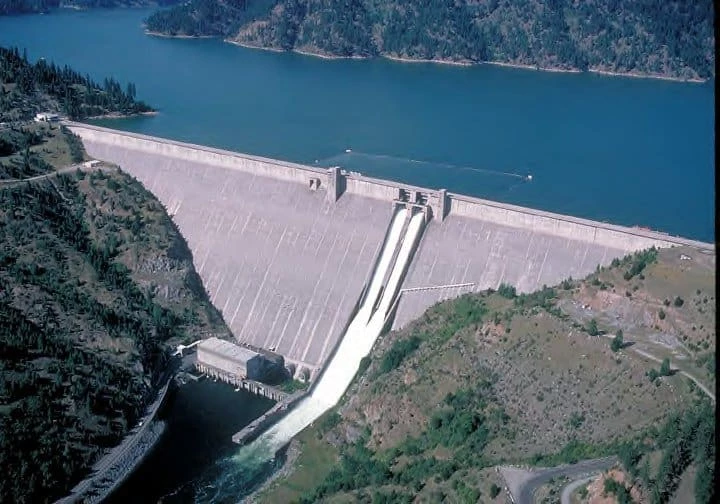
This great dam is one of the outstanding features of Idaho. This dam was a project that came up out of necessity due to damaging floods. It was an effective way of controlling the water and preventing floods downstream.
Quick Facts
- Date of construction:1973
- Dworshak Dam: Idaho
- River: N.F Clearwater River
- Type of Dam: Concrete gravity
- Height: 717 Feet
Something You Didn’t Know About Dworshak Dam
- The Dworshak dam has the longest axis of gravity in the western hemisphere
- It took double the amount of concrete used in the Great Pyramid
More About Dworshak Dam
This marvel of engineering is the 3rd largest dam in the United States. It stands at an impressive 717 feet height that speaks for its home State, Idaho.
The construction of this dam went on between 1966 and 1973. The dam’s construction was shrouded in a lot of politics and conspiracies. Most people questioned its relevance since there weren’t any prevalent floods in the region.
Despite this, the project was successful, and it offered better control over the water. Additionally, it had 3 power units for hydroelectric power. The dam had the approval to add 3 more units, but the plans never took off.
4. Grand Coulee Dam

You will find this dam the West of Spokane on the Columbia River. Everything about it is amazing, from how it looks to its design and operation. This dam holds back a large reservoir of water that gets to the Canadian border.
Quick Facts
- Date of construction: 1942
- Location: Washington
- River: Columbia River
- Type of Dam: Concrete Gravity Dam
- Height: 550 Feet
Something You Didn’t Know About Grand Coulee Dam
- President Franklin D. Roosevelt himself opened the dam.
- It is among the 7 civil engineering wonders in the US
- The dam irrigates more than 670,00 acres of land
More About The Grand Coulee Dam
This historical dam is an impressive piece of American history. The project happened during the great depression, and it provided jobs for thousands of people. Sadly, 81 of these people died in the construction process.
The whole project used 12 million yd2 of concrete. This dam was crucial in World War II. It produced the electrical power necessary for forging Aluminum for fighter planes. Additionally, this dam had a major role in creating atomic bombs.
It powered a research facility that produced plutonium crucial for atomic bombs. This dam also has a dark side. It partially flooded a large part of Native American ancestral homes. This caused the relocation of over 3000 Native Americans.
5. Fontana Dam
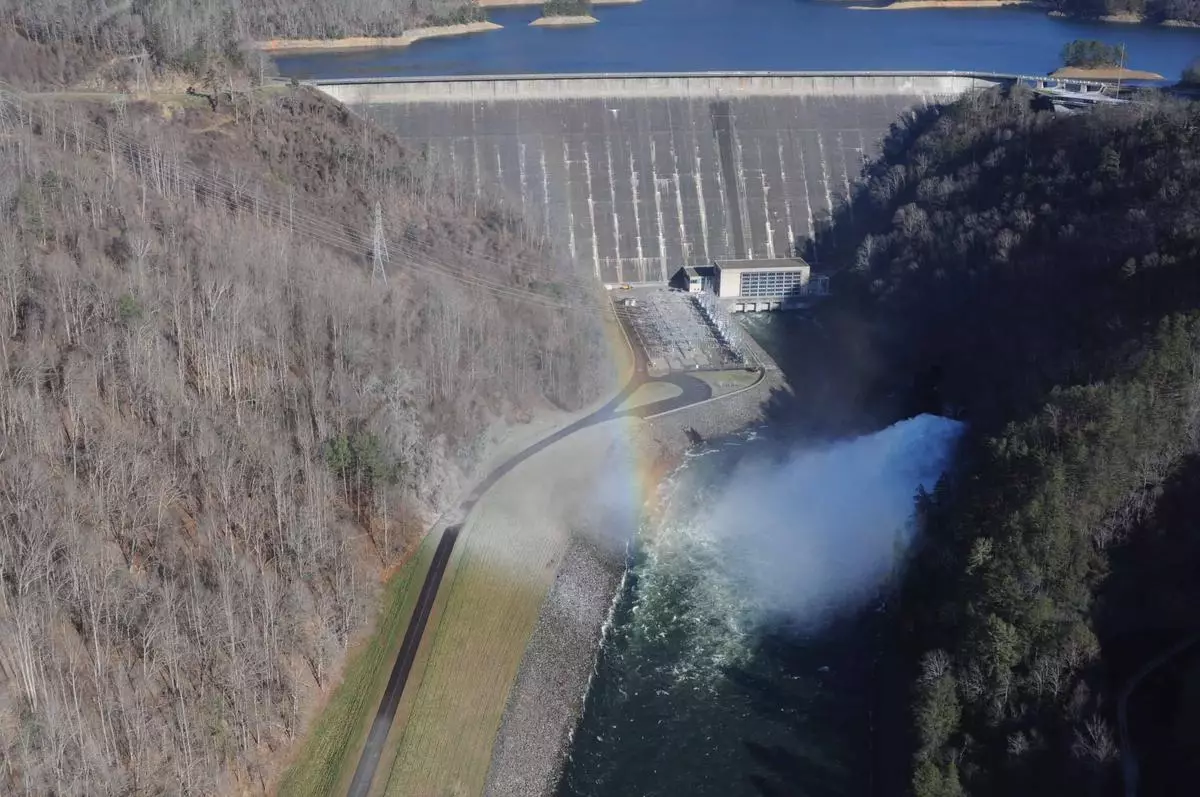
There is a lot to see east of the Rocky Mountains, but the Fontana Dam will be the most bewildering sight. You can go to the Great Smoky Mountains National park and get a closer look at this majestic dam.
Quick Facts
- Date of Construction: 1945
- Location: North Carolina
- River: Little Tennessee River
- Type: Gravity concrete dam
- Height: 480 Feet
Something You Didn’t Know About Fontana Dam
- It is the tallest dam on the Eastern side of the Rocky Mountains
- Its construction took only 36 months during World War II
More About Fontana Dam
The dam’s construction was an urgent project since the US needed more power for World War II. The project was quick, producing electricity in about 3 years. It holds back the Little Tennessee River to form a lake.
This setup provides one of the most beautiful sites in the United States. The best part is that it is inside a national park. You can see it and other natural places and even walk on top of the dam and its beauty.
The lake is a prime spot for fishing and boating, thanks to its 238 miles of shoreline. This gives the local businesses a chance to rent equipment and make more money.
6. Ashfork- Bainbridge Steel Dam
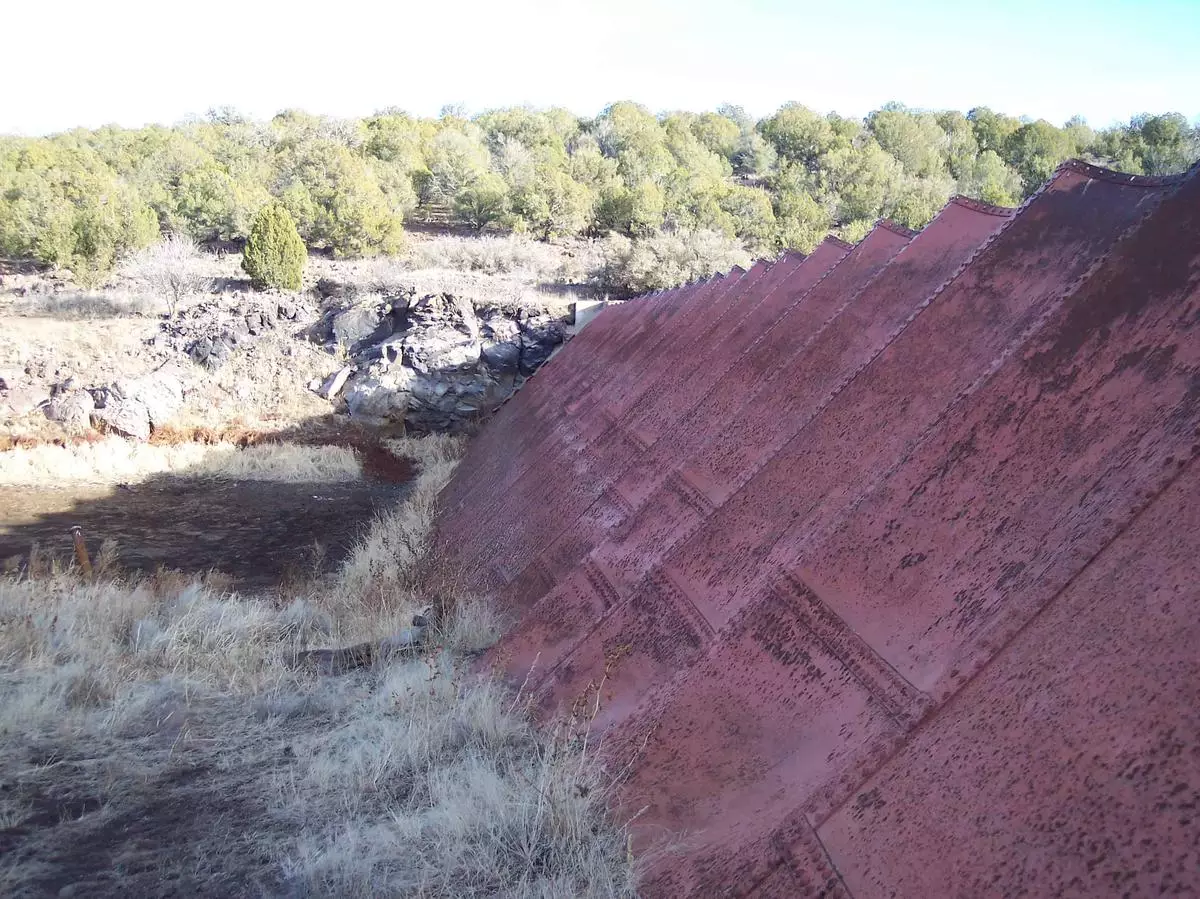
This is another impressive piece of architectural history. It is an old project that has kept up its relevance and intrigue to visitors. It was primarily for flood control and hydroelectric power, both functions that it carries out today.
Quick Facts
- Date of Construction: 1898
- Location: Arizona
- River: Merrimack River
- Type of Dam: Steel Spillover dam
- Height: 46 feet
Something You Didn’t Know About The Ashfork Steel Dam
- It was the first and biggest steel dam at its time of construction
More About The Ashfork-Bainbridge Dam
The construction of this historic monument ended in 1898, and it was an impressive feat. The dam stood out regarding the materials used to construct it and its design. This dam was the first steel dam since others used concrete and stone.
It didn’t have a spillway since steel is harder to design. Instead, the engineers made a strong bridge and accounted for a 6-foot spillover. This means the river flows over the dam once it is full rather than through it.
This dam was crucial for producing hydroelectric power and managing floods downstream. It was also important for the railway network since they used steam engines. The engines needed a lot of water to work, and the dam was their main source.
7. Buffalo Bill Dam

If you are a hardcore music fan, you must have heard about Buffalo Bill and got surprised. This dam is one of the most spectacular aspects of Wyoming. The dam is as practical as majestic since it plays a crucial role in its ecosystem.
Quick Facts
- Date of Construction: 1910
- Location: Wyoming
- River: Shoshone River
- Type of Dam: Concrete arch dam
- Height: 350 Feet
Something You Didn’t Know About Buffalo Bill Dam
- The dam was purely an irrigation project when the project started
- Buffalo Bill Dam is in the National Registry of Historic places
More About Buffalo Bill Dam
William F. Cody owns most of the land around the dam; hence the dam took his name as an honor.
After its construction in 1910, the Buffalo Bill Dam was the tallest globally. This made it a big contribution to the United States history; hence it is a historical monument.
The dam is an irrigation project that provides water for more than 107,000 acres of farmland. Its location allows it to supply water to Montana and Wyoming, crucial agricultural hotspots.
The project started for irrigation, but it evolved out of the increased demand for clean energy. Along with others on the same river, this project produces about 30,500 kW of electricity.
8. Theodore Roosevelt Dam
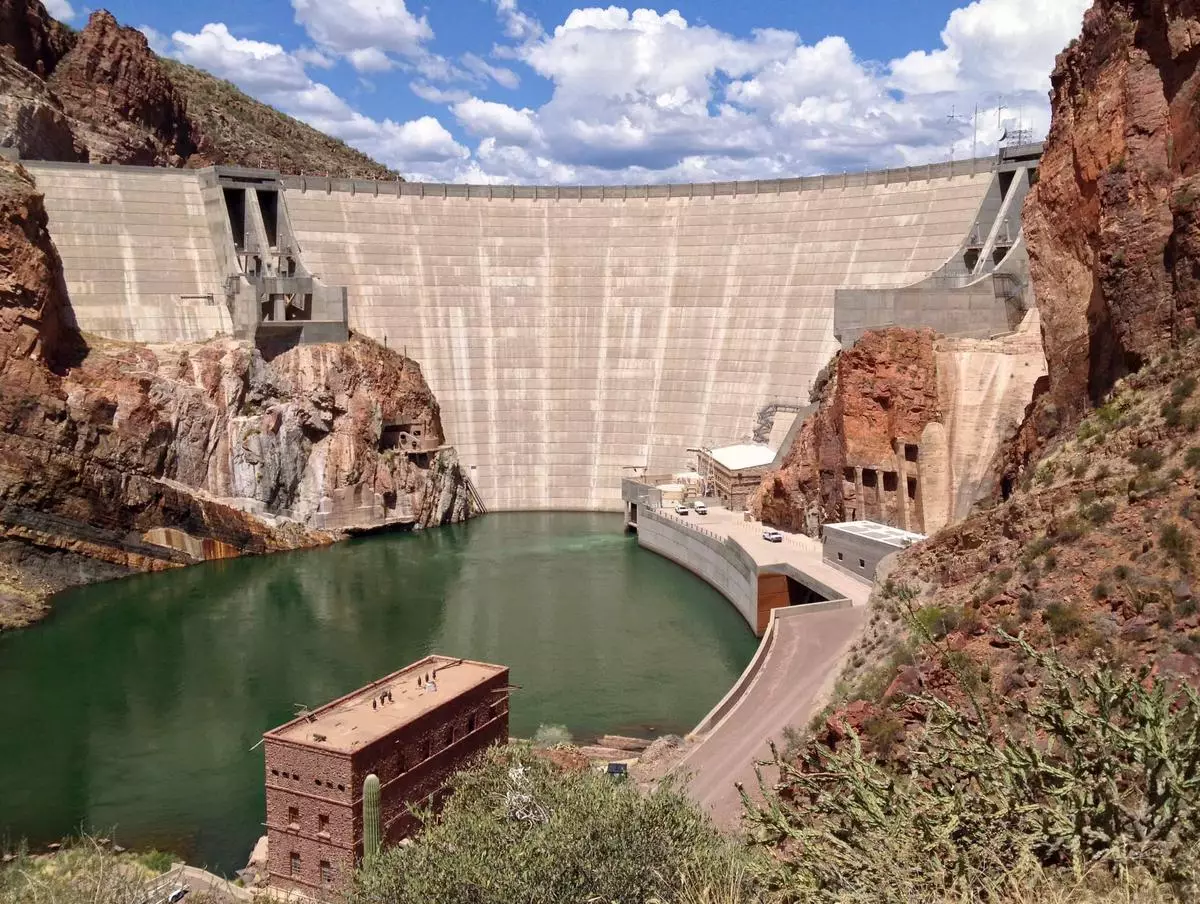
This is an impressive piece of architecture that stands between the box canyon walls. The dam showcases a combination of nature and human genius like nothing else. Construction workers used stones from the cliffs near the dam to build it.
Quick Information
- Date of Construction: 1911
- Location: Arizona
- River: Salt River
- Type of Dam: Concrete Arch Dam
- Height: 357 Feet
Something You Didn’t Know About Roosevelt Dam
- It was the largest masonry dam at its time of completion
- It is a national historic landmark
- President Theodore Roosevelt himself opened it
More About The Roosevelt Dam
This was a massive project, and it needed a lot of stones. The Italian stone cutters in this project got the stones from cliffs around the area.
This reduced the average cost, and the dam stood at 280 feet upon completion.
At the time, there were constant floods in the Phoenix area. This brought the need to have a reliable water management system. The Roosevelt Dam was the solution to the flooding problem and offered an opportunity for more.
It had power production capabilities, making it a modern marvel for the community. This dam has a big part in making Phoenix the amazing, bright city we all know.
9. Diablo Dam
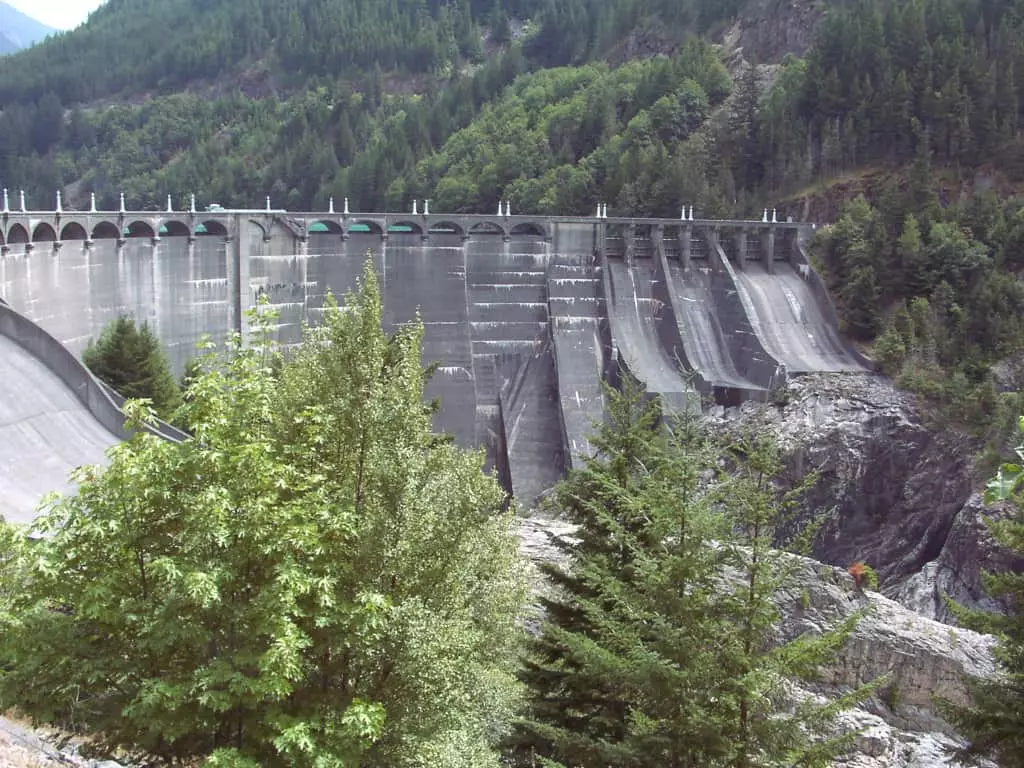
This dam is outstanding, from the beauty of its surroundings to its design. It holds back a clean water reservoir in the North Cascade mountain range on the Skagit River.
It is vital for flood control and the production of hydroelectric power.
Quick Facts
- Date of Construction: 1936
- Location: Washington
- River: Skagit River
- Type of Dam: Arch Gravity dam
- Height: 389 Feet
Something You Didn’t Know About Diablo Dam
- The dam got its name from the numerous primates that live in the area.
More About Diablo Dam
This dam boldly stands in the North Cascade mountain range on the Upper side of the Skagit River.
After its construction in 1936, Diablo Dam was the tallest dam globally at 389 feet. It has an impressive arch-gravity design that has withstood the test of time.
This dam’s water formed Diablo Lake, a major tourist attraction. This crystalline lake has a distinctive jade-green glow that attracts tourists. It comes up as the sun reflects off glacier sediment floating in the water.
The dam is important to humans and the nature around it. A strong ecosystem has formed around the dam, and it doesn’t prevent the migration of any animal species.
10. Fort Peck Dam
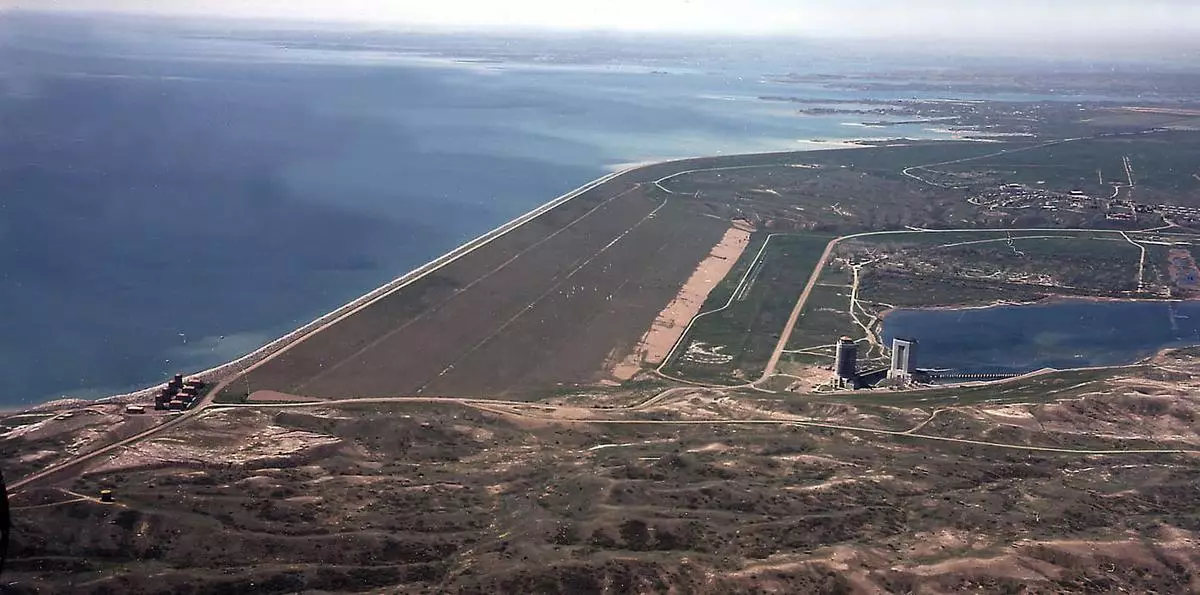
This project is the largest dam on the Missouri River, and it has the largest impact. It is about 21,000 feet long at the top with a 3,500-foot base. This massive size has made the Fort Peck Dam famous among tourists and engineers.
Quick Information
- Date of Construction: 1940
- Location: Montana
- River: Missouri River
- Type of Dam: Hydraulic Earthfill dam
- Height: 250 Feet
Something You Didn’t Know About Fort Peck Dam
- It is the biggest hydraulic filled dam on the planet
- The dam’s construction used sediment from the Missouri riverbed
More About Fort Peck Dam
This dam might not be the highest, but it stands out because of its length. It stretches about 21,000 feet, making it the biggest dam on the Missouri River. It holds a reservoir that forms the world-famous Fort Peck Lake.
For its construction, workers pumped sediment from the river’s base. They mixed the sediment with rocks and other materials to form the dam. It started generating electrical power in 1943 and has been in service since.
11. Mansfield Dam
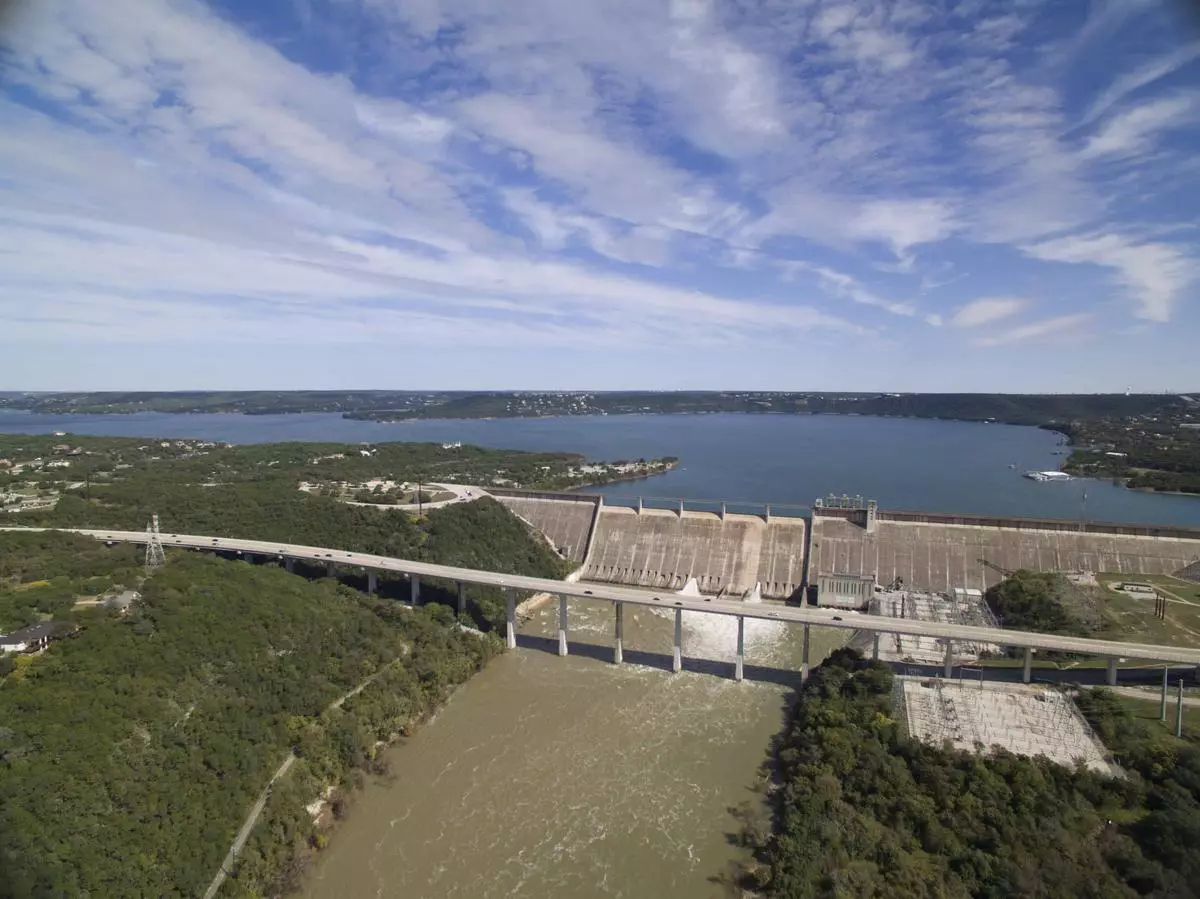
This dam is another impressive piece of American architecture in Texas. It stands at an impressive height, allowing it to hold back a massive lake.
This lake attracts many tourists and makes money for the local community.
Quick Facts
- Date of Construction: 1942
- Location: Texas
- Type of dam: Concrete Gravity Dam
- River: Colorado River
- Height: 278 Feet
Something You Didn’t Know About Mansfield Dam
- The dam’s name was initially Marshall Ford Dam because of its location
- It is the largest dam in Texas
More About Mansfield Dam
This impressive dam stands in a deep canyon in Austin to hold back the mighty Colorado River. Mansfield Dam is 278 feet high, making it the tallest dam in Texas. This large size makes it crucial for several tasks.
First, it manages floods downstream by holding back the water. The dam’s reservoir forms Lake Travis, a water source for millions of people. The dam also uses the water from Lake Travis to produce hydroelectric power.
Lake Travis spans about 64 miles allowing for numerous recreational activities. Thousands of people visit the lake for fishing, boating, zip-lining, and camping.
Conclusion
There are numerous famous dams in the USA for you to visit. They are outstanding because of their designs and sizes or historical significance. Dams are becoming more common as the demand for clean energy increases.
Dams can also help save lives by managing floods, especially along large rivers. There are some environmental concerns about dams. Some environmentalists worry about how dams affect marine life in the rivers. This is most prevalent in migratory species that the dams block.


